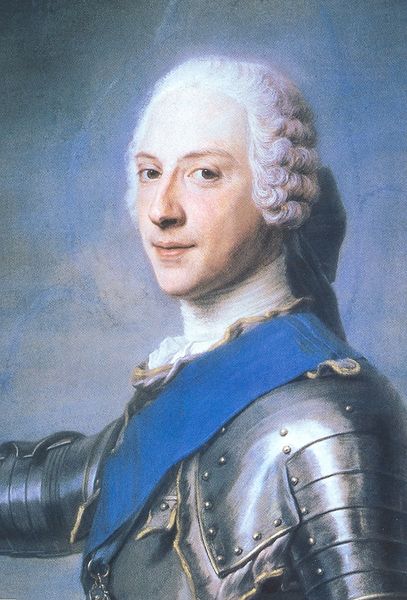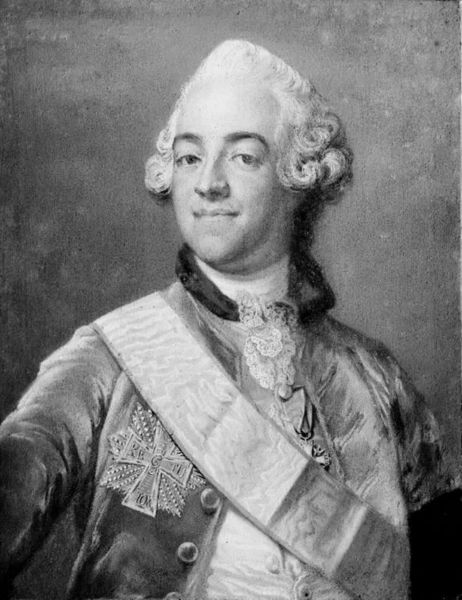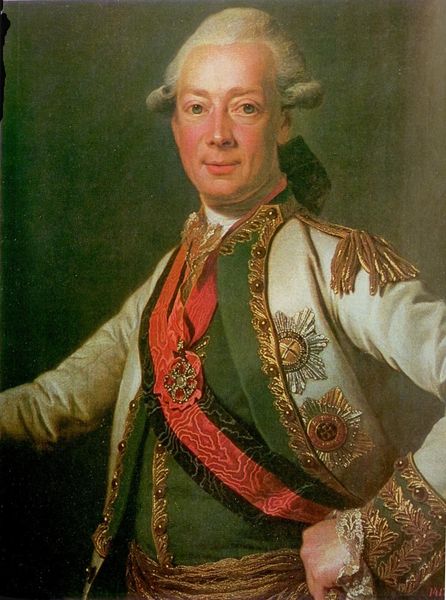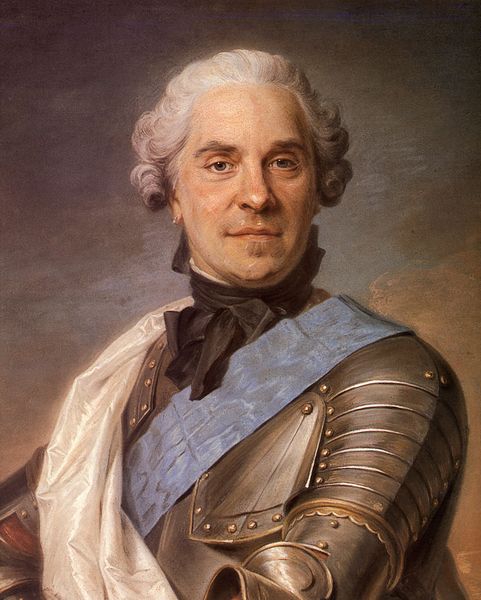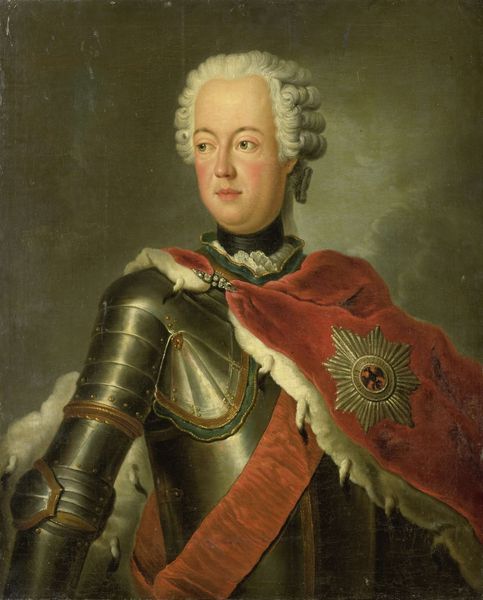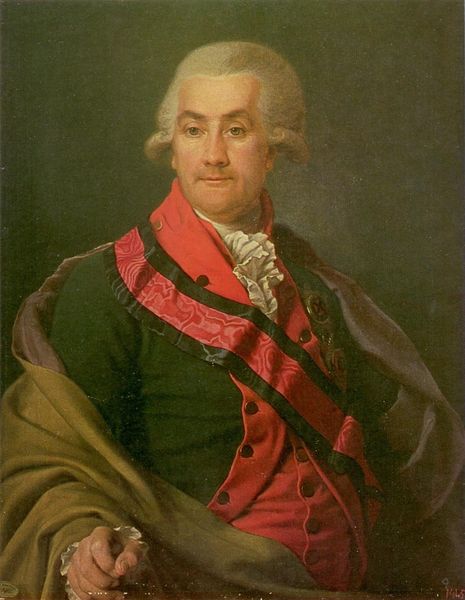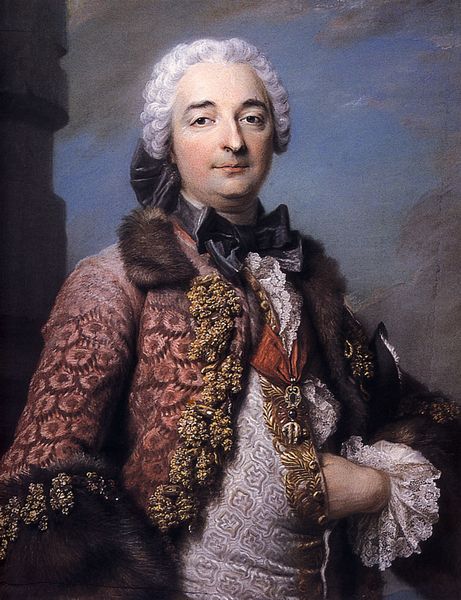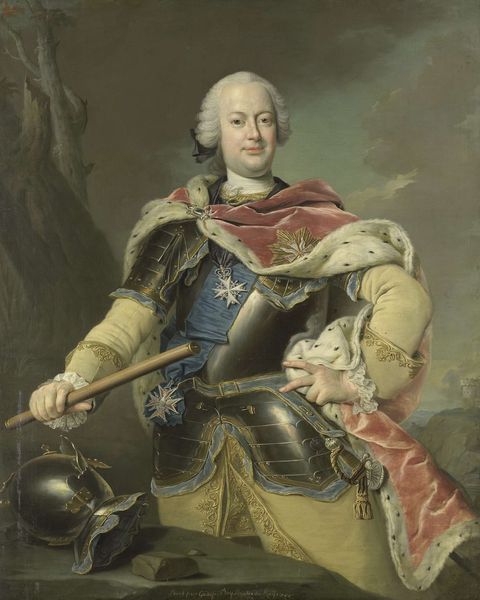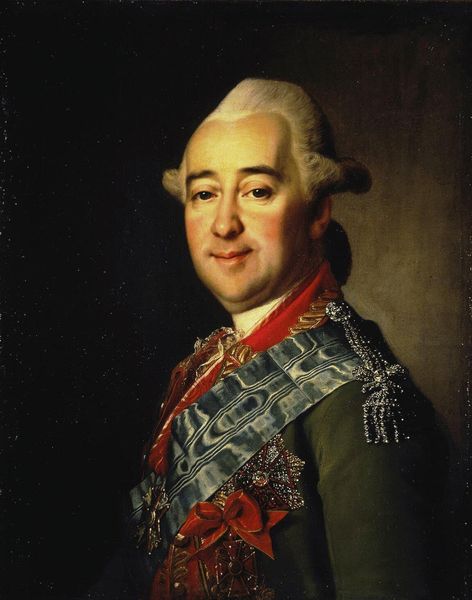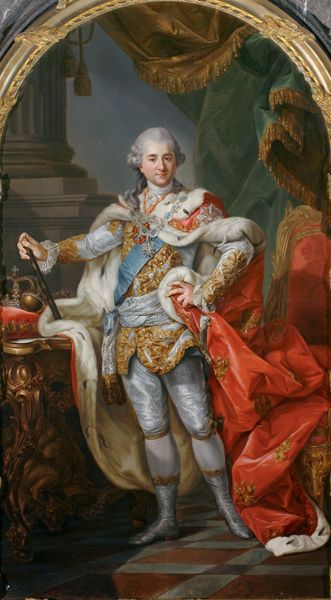
painting, oil-paint
#
portrait
#
painting
#
oil-paint
#
france
#
history-painting
#
academic-art
#
rococo
Dimensions: 60 x 54 cm
Copyright: Public domain
Curator: Immediately, the sheer opulence of the piece strikes me. The gleaming armor contrasts so sharply with the softness of his expression. Editor: Let’s dive into that opulence. Here, we have a portrait of Louis XV of France, rendered in oil paint, presumably during his reign. While the exact date is unavailable, we can contextualize it within the academic art traditions and Rococo style that dominated much of the French artistic landscape during that era. Think about the patronage system, the Académie Royale, the very purpose of these portraits. Curator: And consider the labor, too! The mining and refining of the metals for his armor, the sourcing and weaving of the fabrics for his robes – a whole economy represented on one canvas! I'm also drawn to the tactile quality of the oil paint itself. Look at how La Tour, if we're attributing this piece to him, uses layers and brushstrokes to mimic textures, to create that shine on the metal, that fuzziness of the fur trim. Editor: Exactly. And that gleam isn’t accidental. Think about the image of the monarchy it is crafting and projecting. The way power operates is tied up with spectacle. Portraits like this helped solidify the King's authority, reinforcing social hierarchies and communicating a specific political message to both the court and visiting dignitaries. Curator: The portrait served almost as a three-dimensional form of propaganda – a way to translate raw power into visual language. We often think of canvas as static, but the portrait itself actively participates in constructing a culture around royalty. Editor: Right. Moreover, museums and galleries take up that same effort now; institutions also take part in perpetuating artistic narratives and placing cultural value on those particular practices, solidifying political messages about history in their public presentation. The afterlives of paintings are not neutral. Curator: That’s it. It truly forces us to reevaluate painting as not just representational or aesthetic objects but also consider all that social and economic infrastructure they represent. Editor: Indeed. Considering the many ways that portraits construct identity and shape the politics surrounding historical figures really offers new perspective here.
Comments
No comments
Be the first to comment and join the conversation on the ultimate creative platform.

